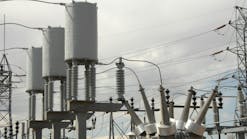In late 2021, a New England state environmental agency suspended the permit for a major new transmission line after construction had begun. The agency’s action appears to have been influenced by a statewide public referendum that opposed the project. Obviously, project suspension and potential cancellation after start of construction is the worst nightmare of every utility executive. This type of event was unheard of 30 years ago when many major projects were developed. Are utilities forgetting some key aspect of successful project development, or has the world changed, or both?
The 1970s witnessed the twilight phase of the greatest electric transmission development era so far in the U.S. A new law, the National Environmental Policy Act or NEPA, required proposed projects to conduct a lengthy environmental review process. NEPA covered not only major transmission projects, but also power plants, pipelines and transportation projects with potentially significant environmental impacts. While burdensome, triggering NEPA results in the development of an independent environmental impact statement (EIS) that evaluates the positive and negative effects of the project, offers alternative actions, including inaction, and thoroughly vets federal, state, and local agency as well as public sentiment regarding the proposal.
There are shortcuts in the federal law that allow avoidance of a major EIS, which seems the more common path today. However, many states have detailed review proceedings for proposed major projects, which include a public hearing and comment process. Historically, utilities and authorities involved in the development of major linear corridor projects possessed a deep bench of support staff experienced with public participation. Corridor projects may affect a large swath of the public with impacts ranging from visual intrusion to outright displacement. It is especially critical to ensure everyone’s input is incorporated into project decisions under such circumstances and methods such as the Nominal Group Technique can be used to achieve as much consensus as possible.
What is going wrong with projects today that are suspended or canceled post start of construction? Are we not doing an adequate job of incorporating the input of all stakeholders or resolving major conflict during the development stage? If parties remain opposed to a project after a final decision is made, have we reached a time in our society that the risk of proceeding with a project may be too great even if an approval has been granted? In the project sited above, the primary benefits appear to accrue to one state and most opposition as well as the agency suspending construction are from another. In fact, the issue on the ballet in the opposing state, which could permanently enjoin the project under construction, supports local transmission while increasing the difficulty of gaining approval for EHV and DC transmission that does not directly benefit the local communities it impacts.
The Infrastructure Investment and Jobs Act (the Act) passed in November 2021 grants FERC broader transmission siting authority within national interest transmission corridors and allows the DOE to become an anchor tenant for new transmission projects. We should be able to review the record regarding gas pipelines to determine whether FERC or DOE involvement in siting or as an anchor tenant in new transmission projects triggers a federal EIS. Pipeline development records also will provide insight as to whether federal siting authority has assured the completion of approved projects historically.
Frankly, we do not know if the Act will help get new transmission built. Unquestionably, it has never been more difficult to obtain consensus regarding major new long distance, interstate, and international transmission projects. Such projects should be designed to deliver demonstrable benefits outweighing the impacts for all affected parties. Rapid growth of and support for DERs does not comport with arguments by policy makers that new transmission is needed to transport or import renewable energy. DERs and other regional resources provide power, jobs, and economic development locally without impacting communities not receiving benefits from remote projects or long distance transmission.
Transmission developers may need to borrow from other energy business segments to provide compelling economic strategies for landowners, host communities and other stakeholders to support new projects. The outright purchase of the required land for a project as opposed to a one-time purchase of a ROW is one example utilities have employed. Offering a production-based payment to landowners and providing a community stipend or other benefits has proven successful in the gas exploration and wind industries. Applying these methods to transmission projects would ensure those living with the project will receive continuing tangible benefits. The power industry is operating in a new era of public activism complicated by policy driven as opposed to strictly need based infrastructure development goals. Successful future projects will require in depth collaboration to get all stakeholders on board and rowing in the same direction.


